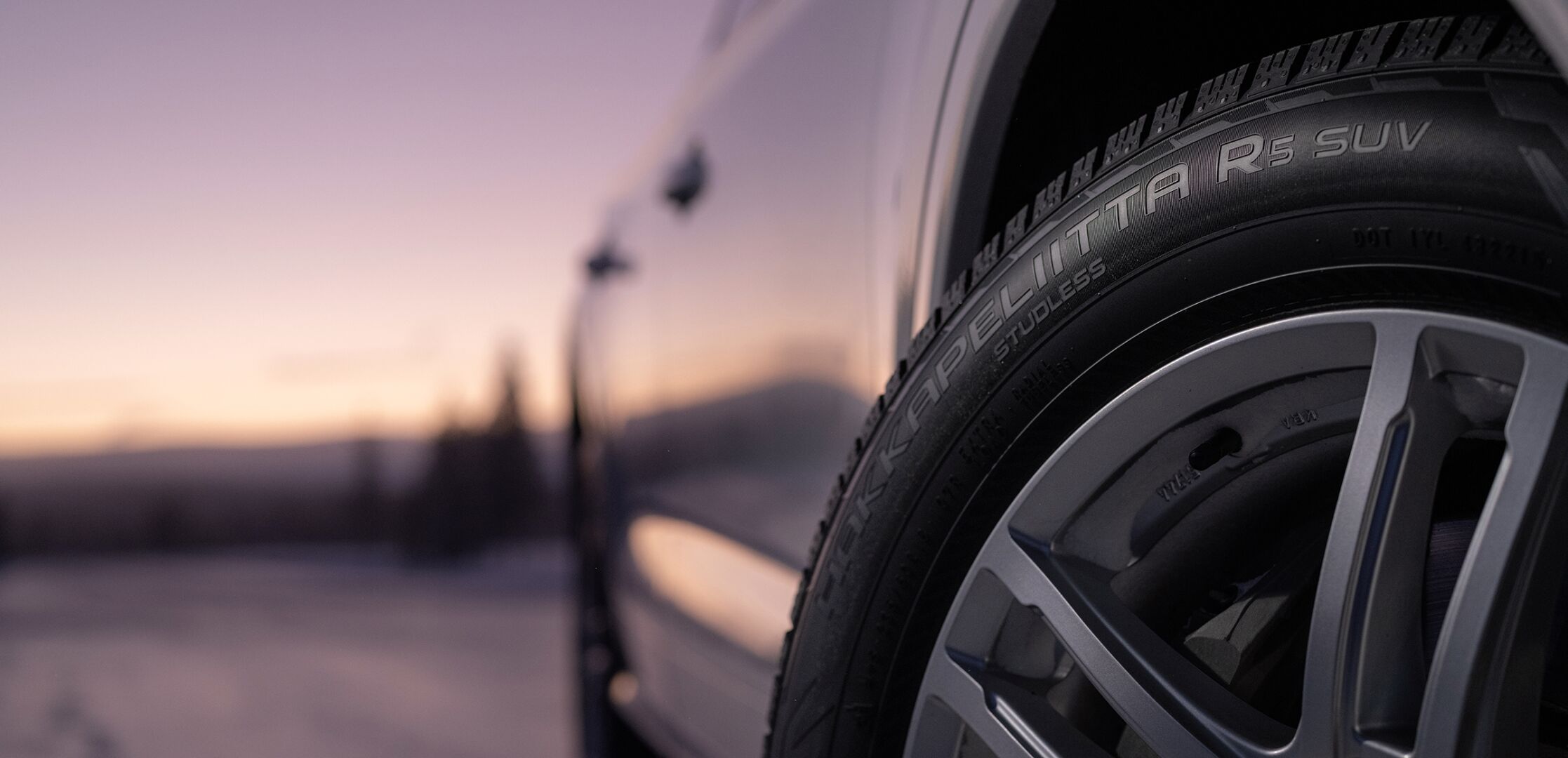
Maintaining recommended tire pressure helps to improve road safety and the performance of your tires. Learn how.
Driving with the proper tire pressure is important for road safety. Maintaining appropriate tire pressures allows for benefits such as even tire wear, less tire noise, improved performance, better fuel economy, and longer service life of your tires. Watch our video on TikTok or here on YouTube Shorts to learn more:
What is the recommended tire pressure for all season tires and winter tires?
Temperature has a significant impact on tire pressurization. We recommend using the vehicle manufacturer’s suggested tire pressure for all season tires.
For winter tires, consider inflating the tires to 3 PSI above the all season tire recommendation. This is because tire pressure decreases as much as 1 PSI with each 10-degree drop in temperature.
The temperature in a warm garage can be up to 60˚F (15 ºC) higher than outside. Be aware of this when measuring your tire pressure during the wintertime, and understand that tire pressure may drop when exposed to the colder outside temperature.
For Example: The temperature in the garage is 68 ˚F (20 ºC), while the outside temperature is 15˚ F (-9 ºC). If the pressure is adjusted in the garage, the pressure added to the tires should be at least be 3 PSI higher than the recommended value to help ensure the correct tire pressure level once you are driving in the freezing outdoor temperatures.
How to check tire pressure
Drivers benefit from understanding how to check tire pressure and use a tire pressure gauge. Ensuring proper tire pressure can reap benefits such as even wear, less tire noise, improved performance and safety, better fuel economy, and longer service life. Maintaining the correct air pressure in your tires is essential for optimal performance and safety on the road. Properly inflated tires promote a smooth and secure driving experience.
Here’s how to check tire pressure using a tire pressure gauge:
1. Check your vehicle's owner's manual, or the sticker within the driver's-side door jam to see the vehicle manufacturer's recommendation for tire inflation.
2. Check tire pressure from cold tires - before you leave for your journey. Driving causes the tires to heat up, so if you want to check the tire pressure after using the tires, wait a while before checking. Try to ensure the tires are not still warm from driving because this can affect the tire pressure reading.
3. Remove the tire’s valve cap and insert the tire pressure gauge. There are different types of tire pressure gauges, so make sure to get familiar with the one you are using to get an accurate measurement.
4. Press the lever or button on the tire pressure gauge, and you should hear a hissing sound. Once the sound disappears, check the reading of the gauge. Compare the reading to the vehicle’s recommended tire pressure.
5. If needed, adjust the air pressure to the recommended level with an air compressor. You can find an air compressor and a tire pressure gauge at a gas or service station.
6. Repeat the process for all four tires. Make sure to check your tire pressure regularly (at least once a month) and remember to check your spare tire as well.
Modern cars are equipped with a tire pressure monitoring system (TPMS), which makes monitoring your tire pressure easier. With TPMS, a tire pressure light turns on when the pressure drops too low and warns the driver. When the light turns on, you know it’s past-time to check your tire pressures. Even if the light does not turn on, it's good practice to check your tire pressure at least once a month.
How to improve safety and lengthen service life of tires
In addition to ensuring the correct tire pressure, drivers should check that uni-directional tires are installed correctly on the car. Look for an arrow on the tire sidewall; this will indicate the correct rolling direction.
To prolong the lifetime of the tires, front and rear tires can be changed from one axle to another every 3,000-5,000 miles (about 4,800 - 8,000 km). This is known as tire rotation. As a result of tire rotation, the tires will wear more evenly and show fewer differences in wear.
Studded tires marked with the three peak mountain snowflake symbol (intended for winter use) on the tire's sidewall should be carefully broken in. For the first ~300 miles (500 km), avoid sudden acceleration and braking. A gentle break-in improves the durability of studding, helping the studs affix securely into place and stay on the tires.
Take care of your tires and improve road safety by using the recommended tire pressure. Remember the effect outside temperature has on tire pressure level. When it’s time to get new tires, visit your local Nokian Tyres dealer for premium all weather tires, all terrain tires, winter tires, and all season tires.
Please remember that it is the driver’s responsibility to ensure their tires are safe and suitable for their vehicle and to follow the vehicle’s manufacturer´s guidelines for proper use and maintenance. Consult your closest Nokian Tyres dealer or your vehicle’s manufacturer for specific advice.


